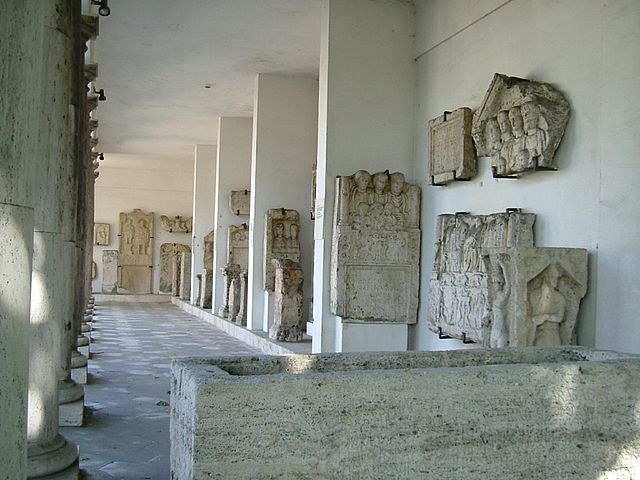Top Qs
Timeline
Chat
Perspective
Lapidarium
Place exhibiting stone monuments and fragments From Wikipedia, the free encyclopedia
Remove ads
A lapidarium is a place where stone (Latin: lapis) monuments and fragments of archaeological interest are exhibited.[1]
This article needs additional citations for verification. (November 2023) |



They can include stone epigraphs; statues; architectural elements such as columns, cornices, and acroterions; bas reliefs, tombstones; and sarcophagi.
Such collections are often displayed in the outdoor courtyards of archaeology museums and history museums.
A lapidary museum could either be a lapidarium or – less often – a gem museum (e.g. the Mineral and Lapidary Museum, North Carolina).
Remove ads
Examples
- The Lapidarium (in the National Museum), Prague, Czechia
- The Lapidarium, Kerch, Crimea, Ukraine
- The Lapidarium of Kings, Copenhagen, Denmark
- The Museo lapidario maffeiano (museum-lapidarium of Maffei), Verona, Italy
- The Lapidary Museum, Avignon, France
- The Estense Lapidary Museum, Modena, Italy
- Split Archaeological Museum
- Samharam Lapidarium,[2] Khor Rowri, Oman.
- Memphite Lapidarium (Mit Rahina, Egypt) [3]
Remove ads
See also
- A glyptotheque, a sculpture museum, usually stone sculptures
- A Lithotheque, an academic collection of natural stone samples
References
External links
Wikiwand - on
Seamless Wikipedia browsing. On steroids.
Remove ads
